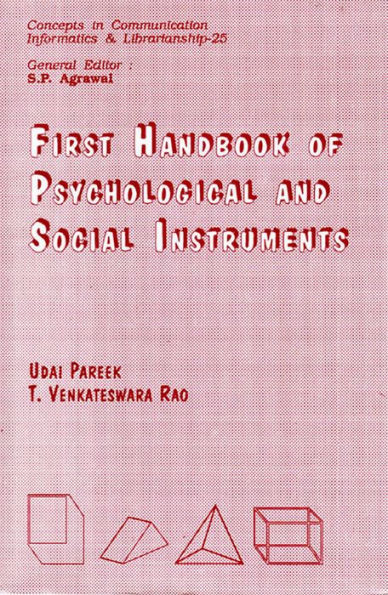First Handbook of Psychological and Social Instruments
The report is a compilation of facts about the river Ganga, firom its origin in the high Himalayas to the delta region through which it meets the Bay of Bengal. The information was collected from numerous sources like University and National Laboratories, and relevant Departments of the Central and State Governments. Deforestation in the Himalayan region, human populations of high density all the way after the river comes down to the plains, and industrialization in several parts, are reportedly the causes upsetting the balance of this ecosystem which has carried the sins of its users since time immemorial. Religious beliefs contribute substantially to its pollution, especially on and soon after auspicious days; Zones of industrial pollution in the river can be identified. The impact of increasing magnitude of sewage and its length deserves to be studied intensively. Causes of increase in the recurrence of floods, magnitude oi self purifying capacity of the river and persistence of industrial pollutants with their attendant effects, are considered to be important areas for investigation. This is perhaps the first exhaustive effort of its type and should prove valuable in steps being planned for successful implementation of cleaning-up operations of this ancient river, which it considered as the most sacred to one of the oldest faiths in the world and which forms the life-line of the most densely populated belt in the country.
"1142702091"
First Handbook of Psychological and Social Instruments
The report is a compilation of facts about the river Ganga, firom its origin in the high Himalayas to the delta region through which it meets the Bay of Bengal. The information was collected from numerous sources like University and National Laboratories, and relevant Departments of the Central and State Governments. Deforestation in the Himalayan region, human populations of high density all the way after the river comes down to the plains, and industrialization in several parts, are reportedly the causes upsetting the balance of this ecosystem which has carried the sins of its users since time immemorial. Religious beliefs contribute substantially to its pollution, especially on and soon after auspicious days; Zones of industrial pollution in the river can be identified. The impact of increasing magnitude of sewage and its length deserves to be studied intensively. Causes of increase in the recurrence of floods, magnitude oi self purifying capacity of the river and persistence of industrial pollutants with their attendant effects, are considered to be important areas for investigation. This is perhaps the first exhaustive effort of its type and should prove valuable in steps being planned for successful implementation of cleaning-up operations of this ancient river, which it considered as the most sacred to one of the oldest faiths in the world and which forms the life-line of the most densely populated belt in the country.
37.49
In Stock
5
1

First Handbook of Psychological and Social Instruments
218
First Handbook of Psychological and Social Instruments
218
37.49
In Stock

Product Details
| ISBN-13: | 9789390623150 |
|---|---|
| Publisher: | Concept Publishing Company Pvt. Ltd. |
| Publication date: | 06/30/1986 |
| Sold by: | Barnes & Noble |
| Format: | eBook |
| Pages: | 218 |
| File size: | 948 KB |
About the Author
From the B&N Reads Blog
